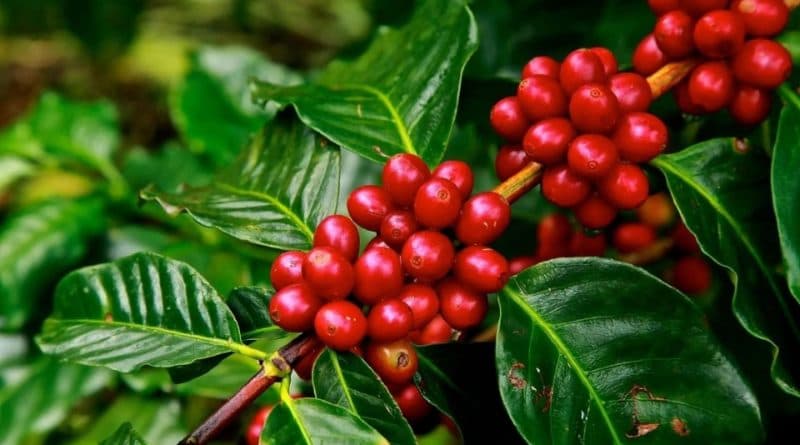
Scientific Name
Coffea arabica
Common Names
Coffee
Plant Family
Rubiaceae
Location
Native to the highlands of Ethiopia. Now cultivated in tropical and subtropical regions worldwide, including Central and South America, Africa, and Southeast Asia. Grows best in high elevations, rich soil, and partial shade.
Description
Evergreen shrub or small tree with glossy dark green leaves and clusters of fragrant white flowers. Produces red berries (called "cherries") that each contain two seeds — the familiar coffee beans. Beans are roasted to develop their flavor and aroma.
Uses
Used medicinally both as a stimulant and as a source of potent antioxidant, anti-inflammatory, antimicrobial, and metabolic supportive effects. Its caffeine content provides central nervous system stimulation (improves alertness, reduces fatigue), mild analgesic synergy, and diuretic action. The phenolic acids and flavonoids impart strong antioxidant activity, scavenging free radicals, protecting cells from oxidative stress, and contributing to anti-inflammatory effects in tissues. Extracts of C. arabica (beans, leaves, or oil) have demonstrated antimicrobial actions (against bacteria and fungi) and support for wound healing in dermato-cosmetic contexts. It also has antidiabetic potential: studies suggest that coffee components can help moderate blood glucose, influence lipid metabolism, and perhaps assist in reducing risk factors for metabolic disorders. Traditional uses include digestive support (stimulation of gastric secretions, mild carminative effect), relief of headaches or mental fatigue, mood enhancement, possibly treatment of asthma or respiratory troubles in some cultures (e.g. leaf sap). Because coffee is warming/aromatic, moderate use supports circulation and energy.
Energetics
Warming, drying, stimulating. Strongly moving and dispersive — drives circulation and mental focus.
Parts Used
Seed (coffee bean) — roasted
Constituents
Caffeine, chlorogenic acid, diterpenes (cafestol, kahweol), tannins, antioxidants
Dosage
- Roasted beverage: 1–2 tsp ground beans per cup
- Tincture (green bean or roasted): 10–20 drops for fatigue or mental fog
Notes on Use
While usually thought of as a beverage, coffee has definite medicinal action. Use it in formulas for deep fatigue, headaches (especially from withdrawal), and as a short-term stimulant to “kick-start” people stuck in cold or depressive states. It’s not for long-term depletion. Caution is important — overuse can lead to burnout or anxiety.
Harvesting
• Cherries are hand-picked, de-pulped, fermented, and dried before roasting the beans.
Contraindications
Avoid in high blood pressure, anxiety, insomnia, or adrenal fatigue. Can be habit-forming. Use mindfully and with balance.
Recipes
- Fatigue Rescue Tincture: Coffee bean, eleuthero, rhodiola
- Liver Wake-Up Tea: Small pinch of roasted coffee bean with dandelion and ginger